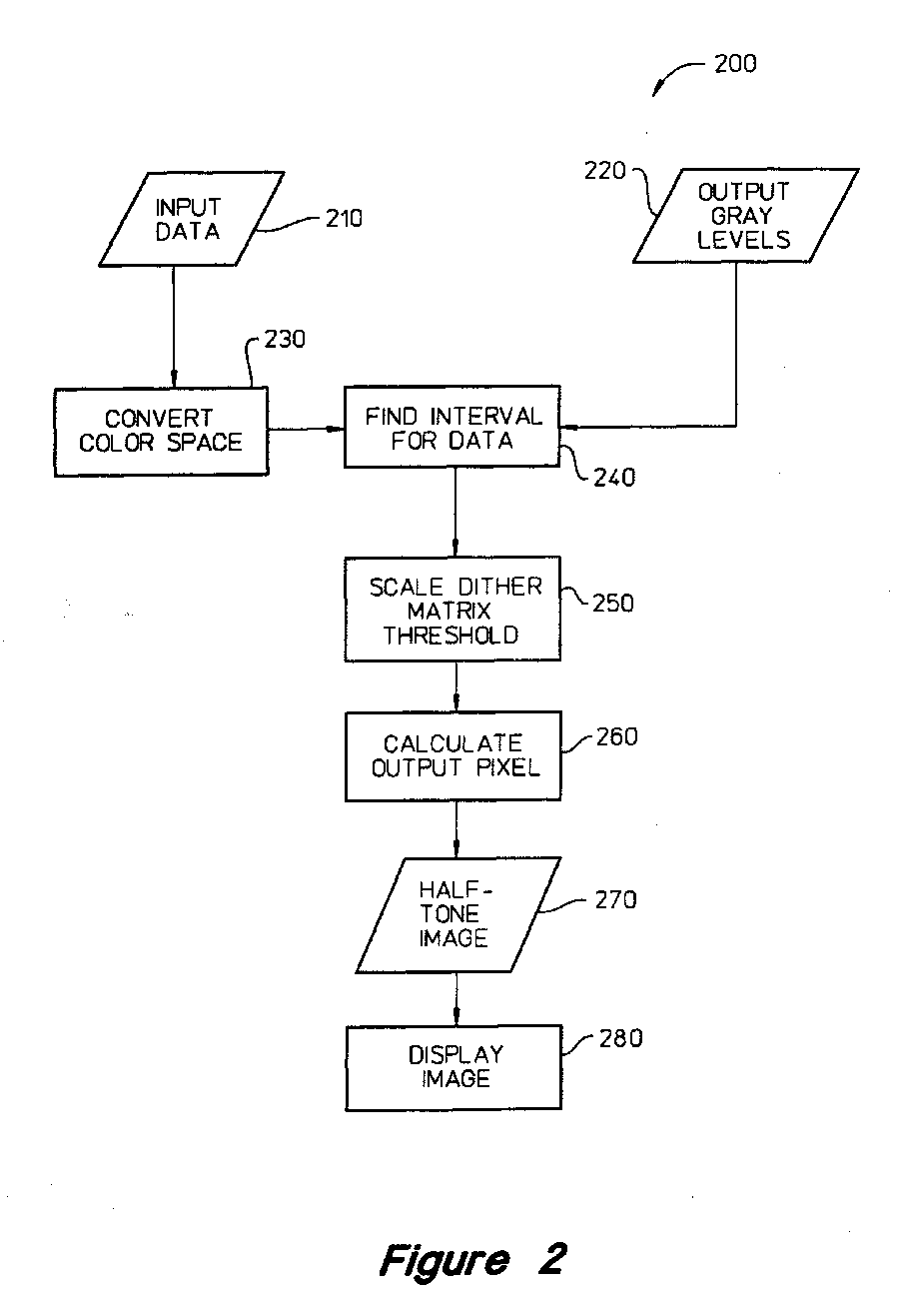(57) A process and apparatus improve color halftone imaging for ink-based printing by
reducing the amount of time necessary to perform the halftoning process (270), by
reducing the amount of ink consumed and by increasing the quality of the images (280)
produced. These benefits are achieved by adapting Image Resolution Enhancement Technology
(IRET) to render color images that achieve near-photographic image quality on a color
inkjet printer having multiple dye load and increased scan axis addressability, while
keeping the computation complexity to a minimum. This is achieved by designing basic
patterns at multiple intensities, and by using a multi-level halftoning technique
to obtain smooth gradations. For plain paper, as well as for coated paper, multi-level
halftoning is performed on an asymmetric geometry to yield the best result, while
for glossy paper, a regular geometry yields the best result because of the limited
ink absorption capacity for glossy paper. Further benefits are achieved through non-primary
color ink reduction and the use of assymetric dither matrices. Thus, the method and
apparatus of the present invention will yield images that have few undesirable artifacts
such as banding, texturing and "worms". Furthermore, a reduced amount of processing
time will be required to render an image and a modest amount of ink will be used.
Besides decreasing the cost of printing, the use of a lower amount of ink can cause
decreased dry time for each print, and can reduce curling of the paper, and smudging
of the image.
|

|
